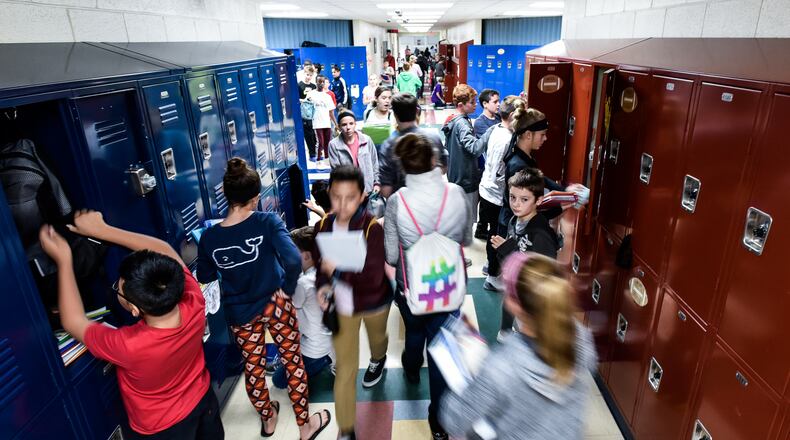The study could impact how Ohio funds programs targeting the achievement gap between rich and poor students and concluded broad services are needed to support low-income students but that maintaining staffing and high expectations also play a role.
For decades, Ohio researchers have pointed to a near straight-line correlation between schools’ poverty level and their performance on state tests, with lower-income communities scoring lower. Clearly, some low-income students score high and some high-income students score poorly, but the overall averages have remained similar for many years.
Many of the study’s recommendations are things Butler County schools are already trying to some extent, including expanding early childhood education, providing social, health and mental health services, and boosting access to career-tech programs.
But the chairman of the Ohio Speaker’s Task Force on Education and Poverty, state Rep. Bob Cupp, R-Lima, said the proposals are aimed higher than just individual schools’ approaches, pointing to state-level policy choices.
“The information compiled (by) the task force will give the legislature a greater understanding of the effects that growing up in poverty has on student achievement,” said Cupp, chairman of the Ohio Speaker’s Task Force on Education and Poverty.
The lobbying and negotiating processes for Ohio’s next biennium budget begins early in 2019 and by law must be completed by June 30. Ohio school district officials watch the Ohio Legislature closely as it determines future school funding levels.
Mike Holbrook, associate superintendent of Hamilton Schools, said the task force’s findings are a useful reminder to state officials.
Of Hamilton’s 10,000 students, 70 percent come from families poor enough to qualify for free and reduced-cost school meals.
“As we move forward with the next biennium budget, the idea that resource allocation would be based on the concept of ‘equal does not mean the same’ … (that) all communities have resources allocated based on student and community needs is a step in the right direction,” said Holbrook.
“The district is encouraged that an approach is under consideration of a ‘one size does not fit all’ model to funding,” he said.
Billy Smith, superintendent of the 10,000-student Fairfield Schools, also welcomed the task force’s findings.
“It is encouraging to see that the work of the task force aligns with many of the supports that Fairfield Schools already has in place,” said Smith, whose district enrolls 43 percent of students who qualify for free and reduced school meals..
“We provide health and mental health services to our most vulnerable students, but all students and their families have access. Our school-based health center opened a few years ago for this reason — to provide dental, medical, vision and mental health services to families in need. Our focus is to provide the services that students need to be successful. That includes removing barriers that distract them from learning,” said Smith.
In Middletown Schools — whose families are among the poorest in Southwest Ohio — Superintendent Marlon Styles Jr. said “while the (state) budget and increased funds is never a guarantee, Middletown Schools already has programs in place to support all students.”
“Middletown has expanded our preschool opportunities, we opened a school-based health center and we have after-school programming,” said Styles, who oversees a district where 100 percent of its students are poor enough to qualify for free school meals.
Cupp’s comments, paired with incoming governor Mike DeWine’s stated focus on helping low-income children, set an interesting backdrop for next spring’s state budget process.
“If you look at the essential functions of government, one is to help the most vulnerable,” DeWine said last week when asked about his children’s agenda. “These are children that I think we have a moral obligation to reach out to.”

